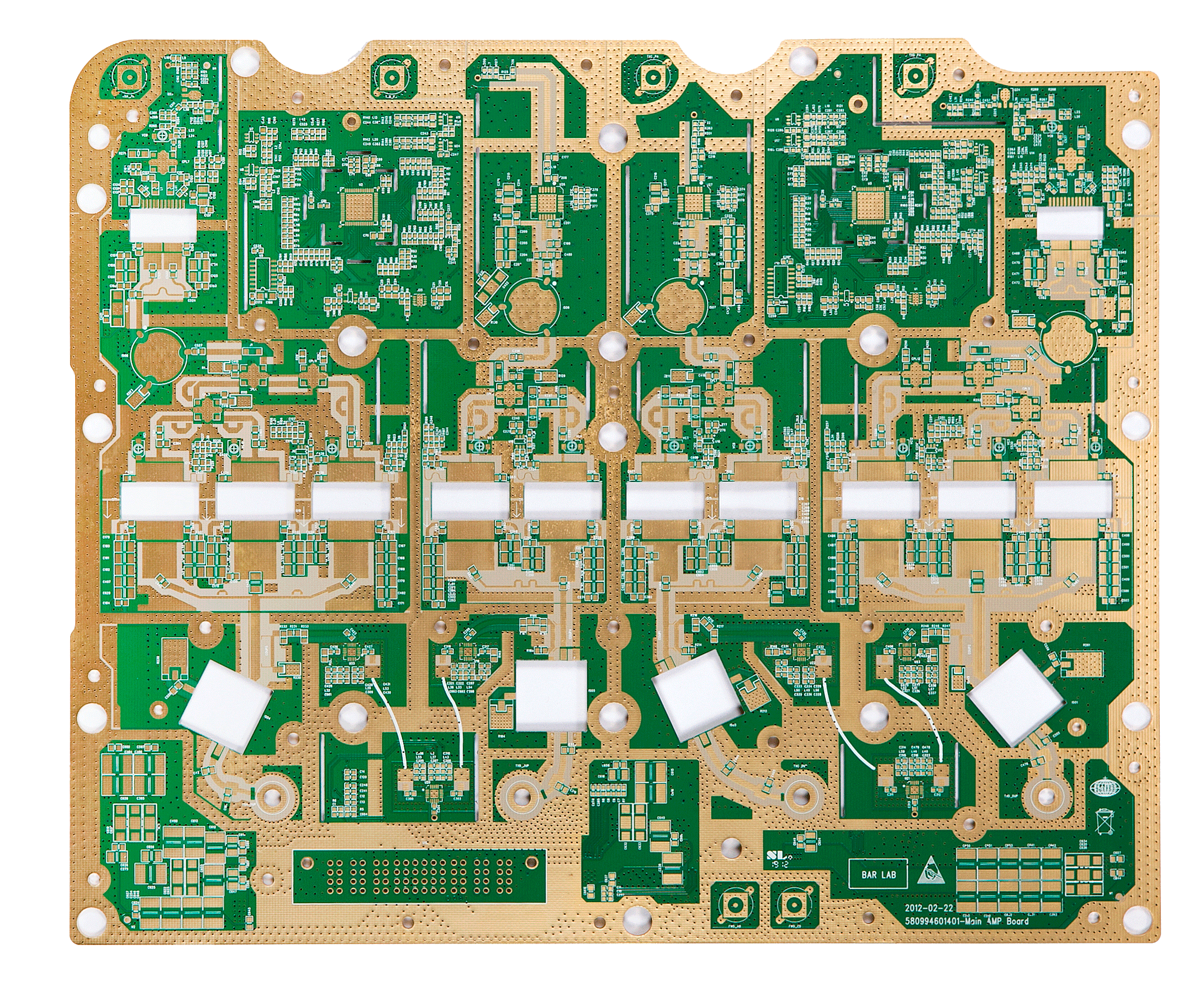Unique Properties for High Frequency Applications
Rogers Corporation offers a variety of high frequency laminates designed specifically for use in advanced printed circuit boards (PCBs). Unlike standard FR-4 laminates, Rogers laminates are engineered to have superior electrical performance at high frequencies. Key properties that make Rogers laminates ideal for high frequency PCBs include:
- Low dielectric loss
- Controlled dielectric constant
- Low coefficient of thermal expansion
- High thermal conductivity
Some popular Rogers laminates for high frequency applications include:
| Laminate | Dielectric Constant | Loss Tangent | Frequency Range |
|---|---|---|---|
| RO4350B | 3.48 | 0.0031 | Up to 20 GHz |
| RO4003C | 3.38 | 0.0027 | Up to 30 GHz |
| RO4835 | 3.54 | 0.0031 | Up to 60 GHz |
Benefits for Designing Advanced Microwave Circuits
The specialized properties of Rogers laminates provide major benefits when designing advanced microwave and mm-wave circuits:
Precise Impedance Control
The stable dielectric constant facilitates precision impedance control needed for controlled-impedance transmission lines.
Low Loss
The low loss tangent results in less signal attenuation, even at very high frequencies. This improves circuit efficiency and signal integrity.
Excellent Signal-to-Noise Ratio
The low thermal expansion and high thermal conductivity helps minimize microphony noise effects.
FAQ

What types of Rogers laminates are best for 5G applications?
RO4835 and RO4000-series laminates are ideal choices for 5G PCBs operating up to 30+ GHz.
Can Rogers laminates be used for multilayer boards?
Yes, Rogers offers adhesive films that allow bonding multiple laminate layers into a high performance multilayer board.
What is the typical lead time for ordering Rogers laminates?
Lead times vary, but are typically 4-6 weeks. Consult Rogers for their most up-to-date lead time estimate.
Are Rogers laminates expensive?
Although they cost more than standard FR-4, the superior high frequency performance of Rogers laminates makes them well worth the additional cost for advanced microwave and mm-wave PCB designs.

Leave a Reply